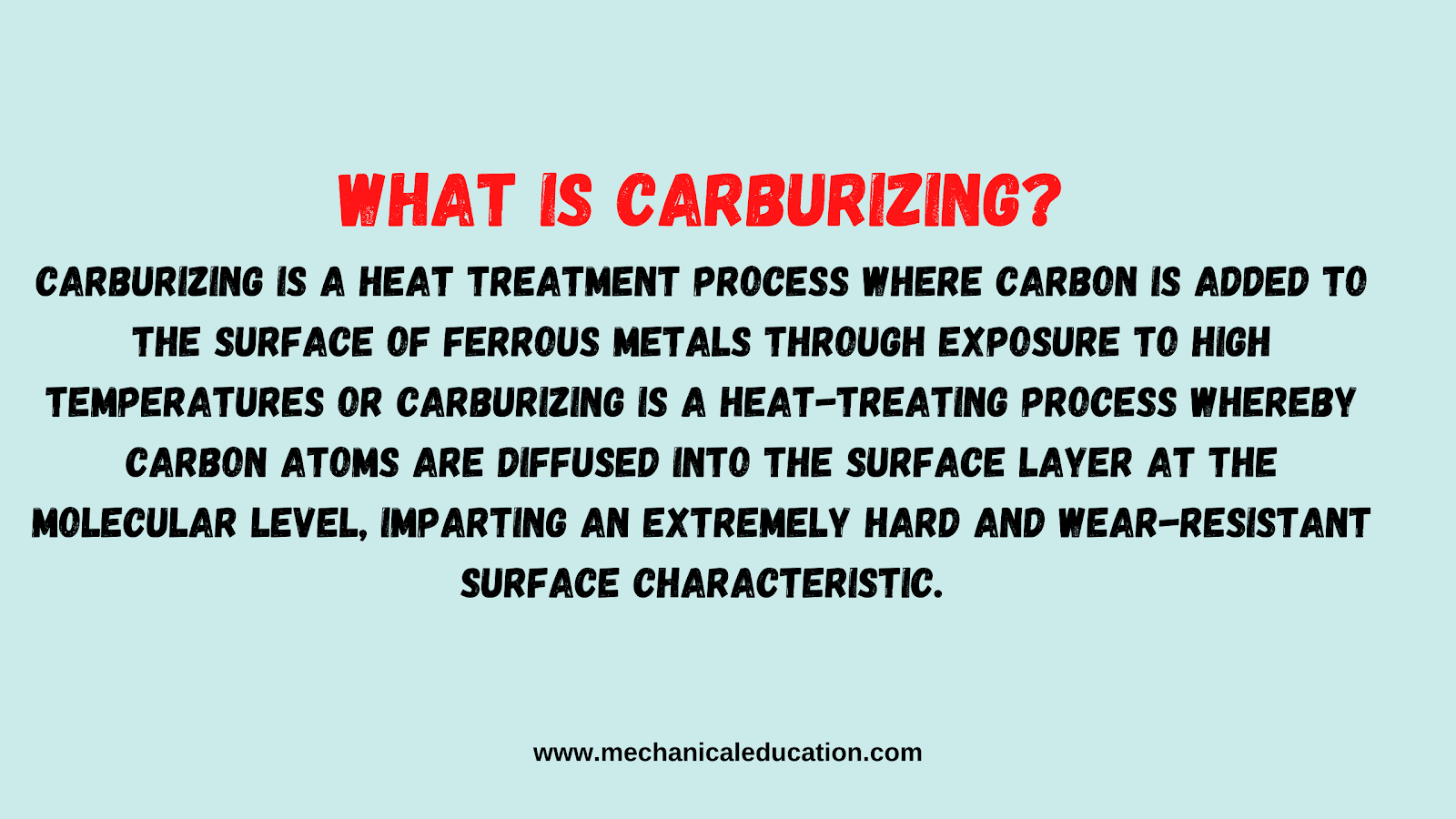Carburizing: Advantages, Disadvantages & Applications
What is Carburizing?
Carburizing is a heat treatment process where carbon is added to the surface of ferrous metals through exposure to high temperatures or Carburizing is a heat-treating process whereby carbon atoms are diffused into the surface layer at the molecular level, imparting an extremely hard and wear-resistant surface characteristic.
Carburizing may be performed either as a visible sign of strengthening at the surface only or as combined with chromium or nitrogen for added corrosion resistance.
Advantages of Carburizing:
- Carburized parts have advantages over non-carburized parts, such as increased wear resistance and corrosion resistance.
- Increased wear resistance: Carburized parts are more wear-resistant than non-carburized parts because the carbon content forms a hard, wear-resistant surface layer.
- Increased corrosion resistance: The carbon content also forms a protective layer that resists corrosion.
- Increased hardness: Carburizing increases the hardness of steel, making it less likely to deform or fracture.
- Improved machinability: The increased hardness of carburized steel also makes it easier to machine.
- This is mainly used to prevent the breakdown in high-stress, high-capacity machineries such as gears, ball bearings, and other internal rotating parts. It does this by causing the conversion of some steel into carburized iron which is tougher than steel but less tough than cast iron.
- It produces parts that can withstand tremendous punishment and keep them looking shiny and new like they’re new again no matter how rough you use them—just don’t expect it to keep the rust away.
- Carburizing also hardens metal parts which can help them to maintain strength under heavy use.
Disadvantages of Carburizing:
- It reduces the ductility of steel and requires long heating and cooling times.
- Reduced ductility: Carburizing makes steel less ductile because it reduces the amount of free ferrite, which is capable of deforming without fracturing.
- Long heating and cooling times: Carburizing requires long heating and cooling times at high temperatures (between 1,300 degrees Fahrenheit and 1,600 degrees Fahrenheit). This makes the process very time-consuming.
- Increased machining costs: The increased hardness of carburized steel also makes it more difficult to machine, resulting in increased machining costs.
- Increased weight: Carburizing increases the weight of steel parts because of the added carbon content.
- Carburizing is a very popular heat-treatment process.
- A disadvantage of carburizing is that while increasing mechanical strength, it decreases ductility and toughness of low-alloy steels. That means that they are more prone to cracking during physical impact or welded joints–especially when the end workpieces are extruded profiles with round wire ends or long cylindrical products where bending strains are concentrated during welding.
- It reduces aesthetics such as coloration and polishing because after carburizing you must polish to reveal the surface.
Applications of Carburizing:
It is used extensively in the automotive and aerospace industries, where wear and corrosion resistance are critical factors. Parts that are carburized often last longer and perform better than non-carburized parts.



